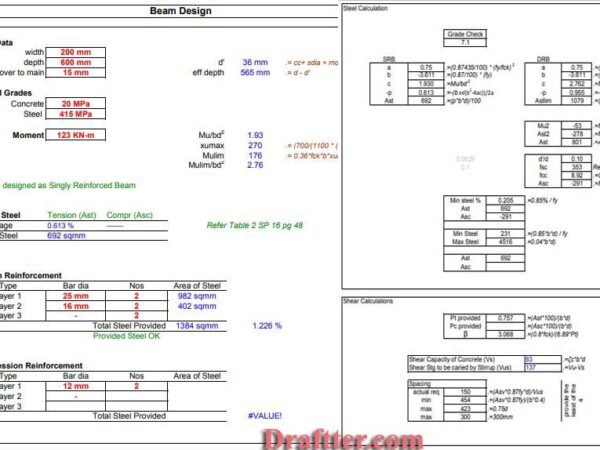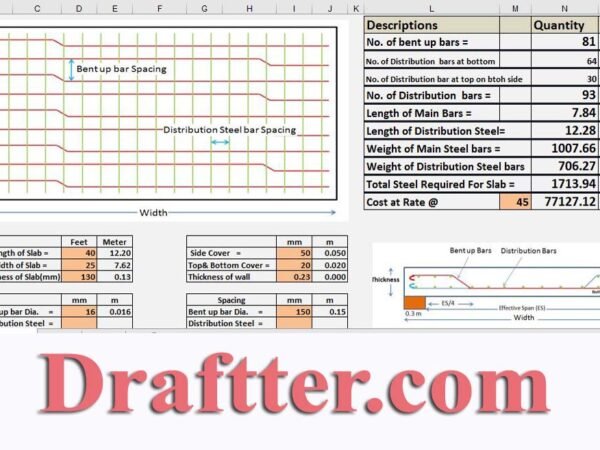Description
Understanding Column Design Calculations
Column design calculations are key to being on top of the game as a structural engineer, especially when handling the design phase of buildings. The work is tailored to help ascertain the safety and stability of structures through the specification of rectangular and square columns. Much of column design revolves around the need to adequately support loads, which consist of both dead loads (the forces that act permanently or statically) and live loads (the temporary or variable forces). It significantly affects the characteristics of the design about the nature of these loads and the material to be used.
The material properties are very fundamental to the whole process of computation. It is obvious that the various characteristics seen in concrete, steel, and timber as materials have made them very meaningful variables regarding the capacity to bear loads and their durability under various conditions of stress. Such pieces of information help engineers make proper choices on the types of materials that will be strong and efficient for their particular application. This process of selection is guided by the applicable codes of practice for design work, which specify the safety and performance requirements that are agreed upon within the industry standard.
Design approaches for column calculations include the use of a software program for complex analysis, working through the empirical method, or limit state design. The formula for Euler buckling or column capacity, for instance, may be preferred by engineers speciating slender columns for evaluation on axial load capacity. The unified comprehension of each of these methods for the behavior of the columns under imposed conditions ultimately serves to ensure not only the safety of the structures but also their cost-effectiveness.
A high level of skills in column design calculation equips an engineer to perform it practically. Being familiar with the procedure is fundamental, as this is what will help in understanding how to work with specialized tools like Excel sheets for column design calculations. Streamlining the design process increases productivity for structural engineering projects in general.
How to Use the Free Excel Sheet for Column Design
The free Excel sheet for column design calculations is a very useful tool for engineers or construction professionals. The interface is very user-friendly so that any operations that the user will want to perform can easily be performed on the sheet. To start, follow the link to download the Excel file and open it with Microsoft Excel. Understand the layout well as normally it is structured with different sections for input parameters, calculations, and results.
Furthermore, enter the required parameters into the provided fields. An example of the required inputs would be the dimensions for rectangular or square columns (height and width, and possibly depth) to define the column. Typically defined by the compressive strength of concrete and the yield strength of reinforcing steel, Material strengths need to be input by the user. Also, state the applied loads. For the column, this is the axial loads, and lateral loads if there are any.
All the required data having been keyed in, the Excel sheet will automatically generate calculation outputs based on the input data. Normally, such results as the required area of reinforcement, moment capacity, and shear strength will be tabulated. These results should be checked so that the values are meaning standard design. If there are any disagreements, recheck the input parameters to ensure no mistakes.
Any modifications for specific project work can be done by adding new rows for more calculations or by altering the formulas based on new design criteria. Some common troubleshooting steps usually undertaken, in case any issues arise during the calculation, are checking references to cells and ensuring units are the same throughout the sheet.
If users follow these guidelines, they will be able to make the best use of the free Excel sheet for column design and will hence be able to use it for working out engineering calculations very efficiently and accurately for rectangular and square columns in their projects.

















Reviews
There are no reviews yet.